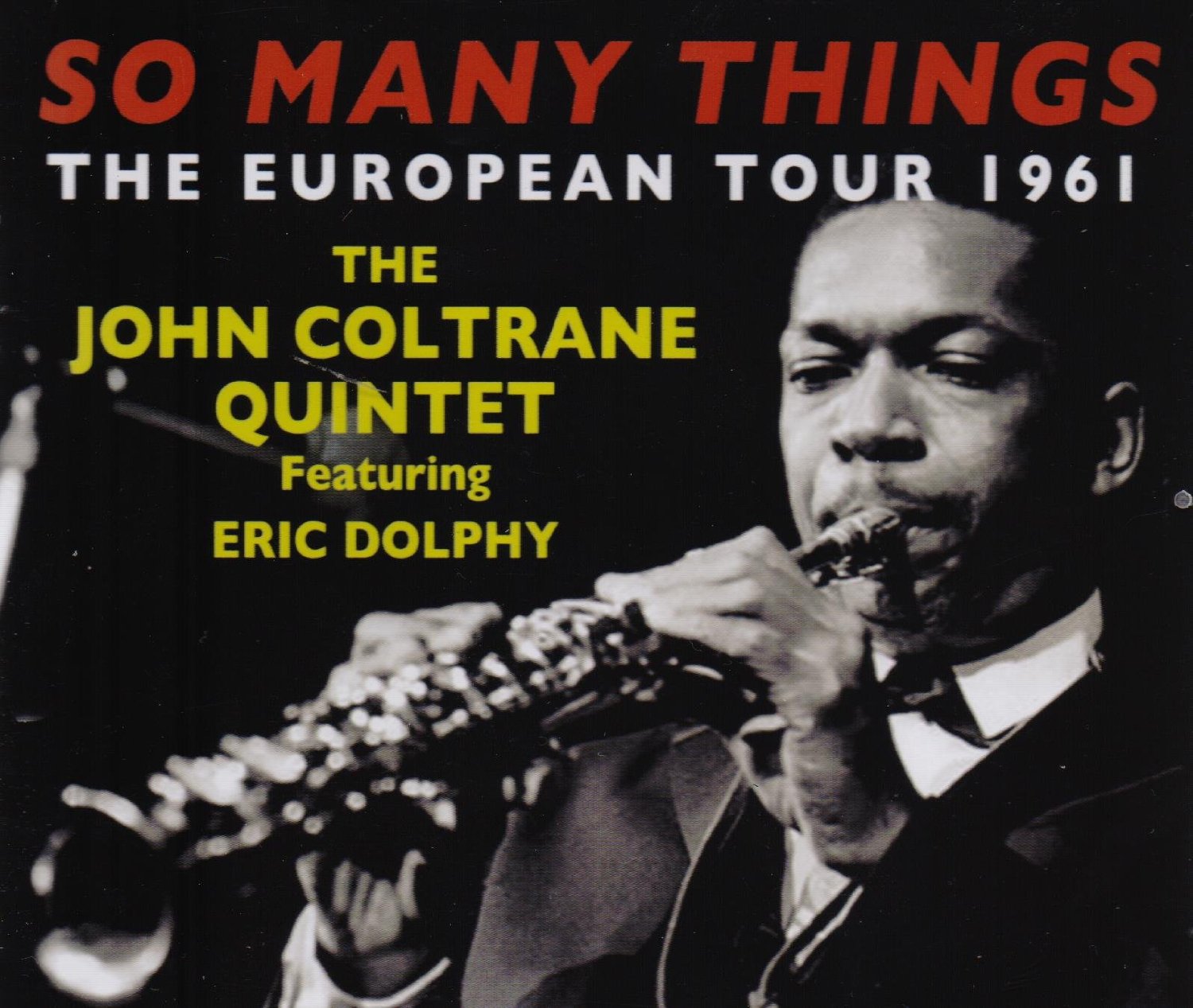
So Many Things, a 4-disc set of six shows from John Coltrane’s fall tour of Europe in 1961, works as a terrific follow-up to last year’s All Of You collection drawn from Miles Davis’ 1960 European jaunt. Coltrane and his majestic tenor sax starred on the Davis tour, and in a bit of turnabout on Coltrane’s visit to the Continent, Eric Dolphy, with his sax and flute, accompanies Trane in a much similar role. The difference between Dolphy’s contributions and Coltrane’s with Davis is that Coltrane had performed on much of the original studio sessions with Miles, so his inclusion played naturally to the repertoire. In Dolphy’s case, he’s an addition to the fold, bringing an uninhibited frenzy to the proceedings, dropping in striking harmony on previously solitary lines as on “Naima” or “Blue Train,” and generally not so much pushing Coltrane’s rapidly emerging ‘sheets of sound’ as he is complementing and affirming its intention.
While he had recorded plenty of records as a leader by this point, including then-current Atlantic classics -_Giant Steps_ and My Favorite Things, it was in 1961 John Coltrane had completely given up his life as an intermittent Davis sideman. This trip to Europe provided risky and crucial trials for his increasing improvisational freedom he’d more than hinted at with Davis in 1960, with Coltrane now firmly taking in hand a hammer to the mold. Met with various harsh criticisms, especially focused on the length of Dolphy and his solos (often eclipsing the 10-minute mark), Coltrane nevertheless pressed forward, supported in likeminded service by the indefatigable Elvin Jones on drums, Reggie Workman on bass, and the unequalled McCoy Tyner on piano.
35-minute concert appearances that contained only four songs, featuring such innovation as Eastern modalities swirling over a piece previously known best as a Rodgers and Hammerstein musical number, left audiences by the same token awed and confused. Yet Coltrane remained committed, even strengthened, as the tour progressed. His quartet would become legendary, that is to say more so in the six years following this breakout, redrafting the boundaries of jazz with albums like A Love Supreme, but this brief period as a five-piece with Dolphy is an essential link to the next era of his development. It may not have been an undisputed victory, but it was a conquest over newly discovered, perhaps even invented, territory.
In hindsight, So Many Things could be viewed as a tipping point for John Coltrane; a moment of conscious evolution in his playing and his ambitions. It should also be recognized as a moment of tremendous foresight for Coltrane, to see what he’d done prior to be preparation for what was to come. He did not allow the Davis experience and early solo work to be plateaus, but instead very important steps on the ladder up. This assemblage of concert recordings from the fall of 1961 is, excuse the pun, a giant one.



No Comments comments associated with this post